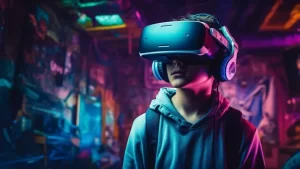The Latest Trends in E-Commerce and Online Retail

With the proliferation of internet access, ecommerce has leveled the playing field and become a crucial channel for retail and commerce. Businesses can utilize data to provide tailored customer experiences, promote products, and deliver ads more accurately on an individual basis.
With more than half of consumers indicating they’re open to trying out novel, digital shopping experiences like virtual reality (VR), QR codes and livestreamed events, retailers are investing in innovative methods of engaging with customers.
1. Omnichannel
Omnichannel marketing is a customer-centric strategy that unites all digital and physical channels. This means customers can interact with you on desktop or mobile device, in store, by phone, SMS or social media and have one consistent experience across all of these interactions.
Integrating your shopping experience is essential for attracting and keeping loyal customers, as well as increasing conversion and retention rates. Furthermore, it increases customer lifetime value (CLV) through enhanced engagement with the aim of improving their overall satisfaction.
No matter if you’re just starting out in ecommerce or have a physical store that wants to expand online, omnichannel capabilities are essential for success. Not only does it help differentiate you from competitors and make your brand stand out in the market place, but it doesn’t need to be complex or expensive; any business can benefit from this strategy if they know how to implement it correctly.
2. Personalization
Personalization is one of the most effective tools retailers have to increase conversions, sales and customer loyalty. According to McKinsey, 78% of consumers are more likely to make repeat purchases if a brand offers them personalized content.
Today’s technologies make this possible with B2C marketers having access to insights from their consumer data. This enables them to develop solutions that address current needs and anticipate those yet to arise.
Personalization in e-commerce refers to providing customers with tailored product recommendations, email notifications and offers that are pertinent to their shopping behavior and interests. It’s essential that you remain cognizant of how customers’ needs shift over time; thus, adapt your personalization strategy accordingly.
3. Augmented Reality
Augmented reality has a profound effect on how people shop and engage. It brings ecommerce products to life with detailed information, enabling customers to make informed purchases.
They can use AR technology to make decisions about their home decor. For instance, Ikea’s AR app enables them to place virtual furniture items inside their home and get a realistic view of how it will appear.
Customers save both time and money by reducing returns. Furthermore, this is an effective way to build trust with shoppers.
Brands can utilize AR in both online and offline shopping experiences. In-store users can experience AR firsthand via mirrors, while out of the store customers can access it via their ecommerce mobile or web apps.
4. Social Media
Social media is the latest innovation in technology that has revolutionized how people shop and connect. It allows individuals to find like-minded individuals around the globe who share similar interests and life goals.
It is an invaluable tool for business and product promotion. With so many users on these platforms, businesses can quickly reach a wide audience with their message.
Additionally, it offers a platform for customer feedback that can assist businesses in improving their products or services and responding promptly to negative comments. Moreover, this has the potential to boost customer confidence and open new opportunities.


